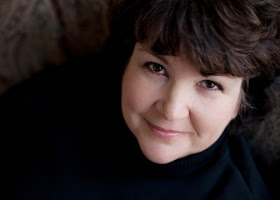“I know I would crumble if I lost you.”
Shannon Hale, ENNA BURNING
`Tis Valentine’s week, reserved for the
celebration of romance, that special someone, and the promise of love. Romance writer, Debbie Macomber, said that we enjoy reading romantic
stories because “we all need to be loved, to feel that we belong, and that’s
what romance novels give us. The sense of being loved.”
Many of our favorite YA fantasy novels are often
steeped in that pursuit of love. One of the best things about romance for this
age group is it often involves first loves, with all its intensity, volatility,
and possibilities for the future. So with that, here are some of the Inkies’
favorite YA couples in fantasy!

There was a lot of love (no pun intended) for
Clary and Jace, from Cassandra Clare’s MORTAL INSTRUMENTS series. Resentment
turns to attraction turns to love, then a struggle to stay apart. Readers were hooked on this couple early on.
“There is no pretending,” Jace said with
absolute clarity.
“I love
you, and I will love you until I die, and if there is life
after that,
I’ll love you then.” – CITY OF GLASS

Our own Inkie, Cindy Pon, wrote the beautifully
romantic SILVER PHOENIX. When the young heroine, Al Ling, embarks on a quest to
find her father, she also learns the shocking and sometimes frightening truths
about herself and eventually lead her to the evil Zhong Ye, who threatens to stand between her and the man she loves, Chen Yong.
“She was
drawn to Chen Yong as if she had been starved for months
for warmth
and light. She closed her eyes a moment, trying
to slow her
racing pulse.” – SILVER PHOENIX

Former Inkie, Cinda Williams Chima, also created a
romance in her SEVEN REALMS series that made our hearts beat a little
faster. The ex-thief, Han, and Princess heir, Raisa, become entwined in royal
politics, a magical amulet, and of course, romance.
“She had
never felt more alive than when she lay dying
in Han Alister’s arms.” – THE GRAY WOLF THRONE

The WOLVES OF MERCY FALLS trilogy by Maggie
Stiefvater
involves a dangerous and
growing romance between Grace, and Sam who lives a dual life between wolf and
human. Sam must choose between Grace and protecting his pack, and both our heroes
must fight to overcome the true price of love.
“You’re
beautiful and sad,” I said finally, not looking at
him when I did. “Just like your eyes. You’re like
a song
that I heard when I was
a little kid but forgot I knew until
I heard it again.” For a long
moment, there was only the
whirring sound of the tires on the road,
and then
Sam said softly, “Thank you.” – SHIVER

Readers were also treated in this past year to
GRAVE MERCY, the first in a trilogy from former Inkie, Robin LaFevers. The
assassin Ismae and noble Duval are at times rivals and occasional allies to
protect a young Duchess. But at all times, there is a fabulous tension as their
love and attraction grows.
“Surely He
does not give us hearts so that we may
spend our
lives ignoring them.” – GRAVE MERCY

And another nod goes to Viola and Todd Hewitt from
the CHAOS WALKING trilogy by Patrick Ness. As Todd reaches the age of becoming
a man in his town, he discovers a silence in the noise, traced back to a girl
named Viola. Difficult decisions must be made if the two will ever be together
in peace.
“It’s not
that you should never love something so much that it
can control you. It’s that
you need to love something that
much so you can never be controlled. It’s not a
weakness.
It’s your best strength.” – THE ASK AND THE ANSWER
In Melissa Marr's WICKED LOVELY series, Aislinn can see faeries, and that isn't a good thing. When they become aware of her, there is more than her love for her best friend, Seth, at stake. Her life is also in danger.
"Sometimes love means letting go when you
want to hold on tighter." - INK EXCHANGE
Other couples that have held our imagination? Day
and June from Marie Lu’s LEGEND, Katsa and Po from Kristen Cashore’s GRACELING,
Briony and Eldric from Franny Billingsley’s CHIME, Karou and Akiva in Laini
Taylor’s DAUGHTER OF SMOKE AND BONE trilogy, Cassel and Lila from Holly Black’s
CURSE WORKERS trilogy, and Sam and Jin from Kate Milford’s THE BROKEN LANDS.
Many thanks to Inkies William Alexander, Lisa
Amowitz, Hillari Bell, Ellen Booraem, Lisa Gail Green, Amy Greenfield, Mike
Jung, Laura Williams McCaffrey, Dawn Metcalf, Ellen
Oh, and Cindy Pon for their contributions.
Now for our readers, what about you? Do you have a
favorite couple from YA fantasy? Or how about a favorite romantic quote?





















